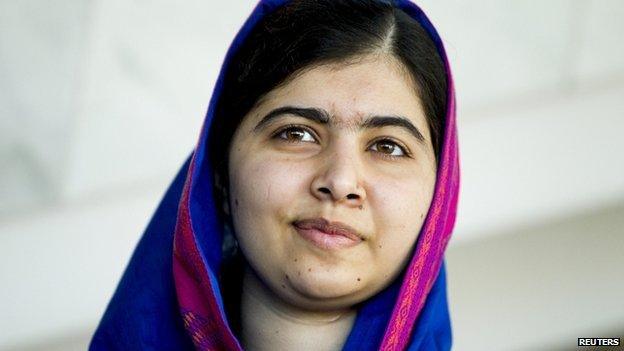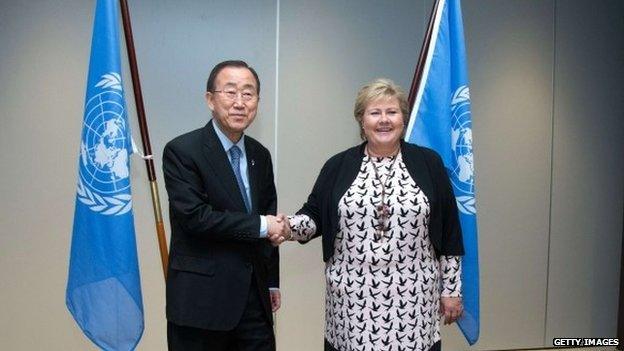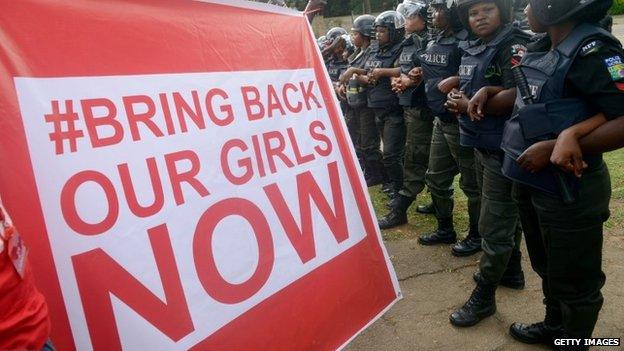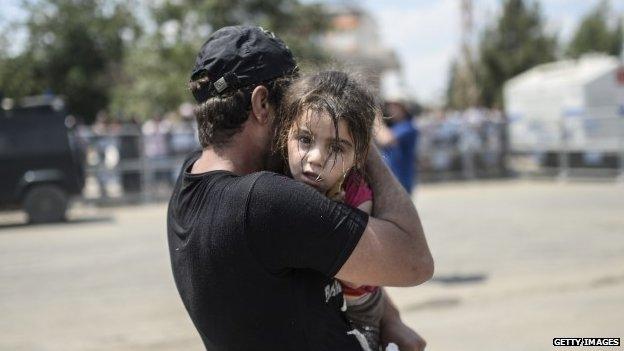The educational struggle faced by girls around the world
- Published

Occasionally stories break through that give a graphic sense of the enormous educational struggle faced by children, particularly girls, in many parts of the world.
For example, the shooting in the head of Malala Yousafzai - an advocate for girls' education - in 2012; the Taliban murder of 132 schoolchildren in an attack on a school in Peshawar, Pakistan, in 2014; and the abduction by Boko Haram of some 200 Nigerian schoolgirls in the same year.
Behind the headlines, the outlook, in terms of educational opportunities for children in some of the poorest parts of the world, appears to be worsening, in spite of international efforts to reverse the trend.
Norway's capital, Oslo, played host this week to an education and development conference, led by the Norwegian Prime Minister, Erna Solberg.
On the agenda was the issue of what to do about the education of children, particularly girls, worldwide.
'Civil rights struggle'
Malala, now a Nobel Peace Prize winner for her campaigning on education, attended, as did former UK Prime Minister Gordon Brown.
Malala, writing in the Daily Telegraph, external, quoted a figure of 60 million girls worldwide being denied an education.
In the Guardian newspaper, external, Mr Brown described the challenge as nothing less than "the civil rights struggle of our time".

UN secretary-general Ban Ki-moon and Norwegian PM Erna Solberg at the Oslo conference
New figures from Unesco, external appear to back up that argument, revealing that the global number of children and young adolescents not enrolled in school has been rising in recent years.
In the school year ending in 2013, some 124 million children between the ages of six and 15 either dropped out of school or did not enrol in the first place.
That was up on the figure of 122 million in 2011.
The majority of those children who have never enrolled are girls, so that means some 62 million girls are out of school worldwide.
Poverty, coercion and war
The global number of out-of-school children of primary school age is also rising. It now stands at 59 million.
Of those, 30 million live in sub-Saharan Africa and 10 million in South and West Asia.
Girls' primary school completion rates are below 50% in most poor countries, according to Unesco, external.
Other statistics pertaining to the situation of girls - and the impact on their life chances - are just as troubling.
According to Unicef, external, every year 15 million girls are forced or coerced into marriage, and one in every three girls in the developing world is married by the age of 18.
Many of those who have studied the issue believe that women and girls face particular obstacles that keep them out of education, including violence, early pregnancy, discrimination, and the costs of going to school.

The abduction of more than 200 Nigerian schoolgirls last year prompted worldwide outrage
Wars, big and small, are also taking their toll.
Some 30 million children are believed to have been displaced worldwide as a result of the growing conflict and chaos in different parts of the globe.
The Syrian effect
Figures are hard to pinpoint but according to the UNHCR, external, the number of refugees has risen to 59 million in 2014, an increase of more than eight million in just one year.
That was largely due to the conflict in Syria, which saw an average of 42,500 people become refugees every day last year.
The majority of Syrian children lack basic necessities and are unable to go to school.
As of December 2013, external, of the 4.8 million school-age Syrian children, some two million inside the country were out of school, as were half a million Syrian refugee children in Egypt, Iraq, Jordan, Lebanon and Turkey.
It is hard to believe that as recently as 2000, Syria had achieved universal primary enrolment.
According to Unesco, Syria is not the only country with a large number of out-of-school children and adolescents.

The conflict in Syria is creating millions of refugees
Huge illiteracy rates
At least one million children were denied the right to education in each of the following countries: India, Indonesia, Kenya, Niger, Nigeria, Pakistan, the Philippines, South Sudan, Sudan and the United Republic of Tanzania.
To pick out just one country in that list - Pakistan - there has been some progress in literacy rates but the situation for young girls, particularly in rural communities, remains a huge challenge.
The paragraphs below in the latest Unesco report, external sum up the scale of the challenge worldwide.
"Despite [some] gains [in literacy rates], 781 million adults still could not read or write - two-thirds of them (496 million) were women. In more than a dozen countries, mostly in sub-Saharan Africa, fewer than half of all adults had basic literacy skills," says the report.
It goes on: "Among youths, 126 million were illiterate, of which 77 million were female. Even though the size of the global illiterate population is shrinking, the female proportion has remained virtually steady at 63% to 64%."
Study after study appears to suggest, external that education helps girls increase their potential wages with each extra year, and the financial independence gained helps them take control of their lives.
The participants at the conference in Oslo recognised the scale of the challenge.
But it is not obvious that just agreeing on aims and goals is enough to bring about much change.